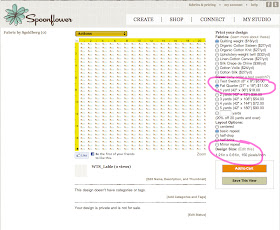Growing up, we always had a real Christmas tree. The first few years of married life I had a real tree too. My husband wasn't so keen on the idea. Logically it makes more sense to get a fake tree... cheaper in the long run, that whole bursting into flames thing, less mess, yada yada. However, sentimentally, I was pretty attached to having the real deal. Last year he convinced me it was time to take the fake tree plunge. I agreed on one condition: we were going to get the best fake tree we could find. And thanks to the American Express points we had built up... money was no object. (Well, it was, but I wasn't getting a $1000 tree or anything) I scoured and found the one I wanted online. A few clicks later in showed up via UPS.
Houston, we have a problem. This tree is HUGE. Apparently things look different in tiny pictures on the internet. I had no idea it was going to be so large. Let's just say our living room is very festive... and half taken up by a massive tree. Oh well... one day we will have a house with a living room big enough to non-ridiculously accommodate our Time Square-sized tree. In the mean time, I'll just make ornaments to fill it up. Cue Scrappy Kid Ornament!
Like it? My 1-year old made that. Well, I made the bow, but he did everything else. : )
Here's what you need.
• Styrofoam Balls (with or without dirt... doesn't matter) Mine were used as make shift golf balls in the backyard, naturally.
• Fabric Scraps
• Glue (Any kind of kid-friendly craft glue that dries clear will work. Mod Podge would be great too)
• Ribbon scrap to make the bow
• Thin string or ribbon to make a loop
• Hot glue to attach those
Step 1
Set up kids and supplies (minus the hot glue) in a glue proof area. My kids worked on paper plates.
Step 2
Help kids cut scraps into 1" - 2" pieces. (I tried to give my daughter coordinating girly scraps, and my son coordinating boyish scraps)
Step 3
Generously coat a 2"-3" section of your styrofoam ball in glue. Apply a scrap or two and smooth it down with your finger. Glue should get on top of the scrap too and on the edges.
Step 4
Continue covering the entire ball with glue and scraps, working in small sections.
Step 5
When dry, poke a small hole with a pencil about an inch deep into the ball. Put a dot of hot glue in the hole and poke 2 ends of a thin ribbon or string in there with the pencil to make the loop. (Adults = hot glue, not kids)
Step 6
Tie a bow with a ribbon or fabric scrap and hot glue it at the top. Done.
Kaley takes her ornament very seriously. (And yes she had a hair cut in between photos)
Austin is a little more excited.

























































